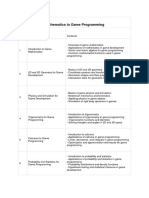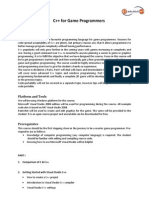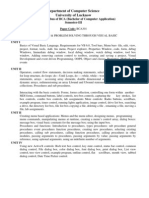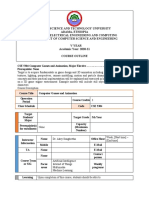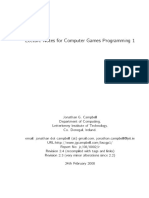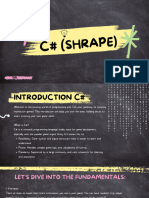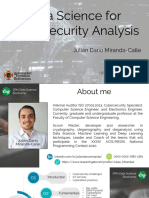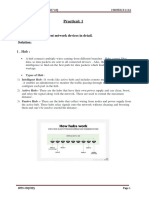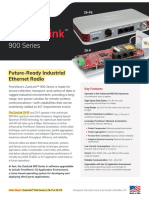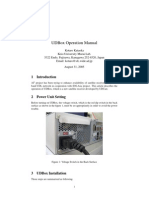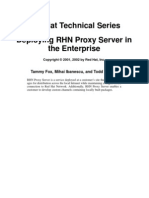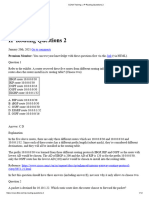0% found this document useful (0 votes)
48 views25 pagesBCA-Game Development Syllabus
The document outlines the curriculum for the Bachelor of Computer Application (B.C.A) in Game Development at Tilak Maharashtra Vidyapeeth, detailing courses offered in the first and second years, including programming languages, mathematics, game design, and software engineering. Each course includes specific topics, practical applications, and references for further study. The curriculum emphasizes both theoretical knowledge and practical skills essential for game development and related fields.
Uploaded by
dmalinirm733Copyright
© © All Rights Reserved
We take content rights seriously. If you suspect this is your content, claim it here.
Available Formats
Download as PDF, TXT or read online on Scribd
0% found this document useful (0 votes)
48 views25 pagesBCA-Game Development Syllabus
The document outlines the curriculum for the Bachelor of Computer Application (B.C.A) in Game Development at Tilak Maharashtra Vidyapeeth, detailing courses offered in the first and second years, including programming languages, mathematics, game design, and software engineering. Each course includes specific topics, practical applications, and references for further study. The curriculum emphasizes both theoretical knowledge and practical skills essential for game development and related fields.
Uploaded by
dmalinirm733Copyright
© © All Rights Reserved
We take content rights seriously. If you suspect this is your content, claim it here.
Available Formats
Download as PDF, TXT or read online on Scribd
/ 25

